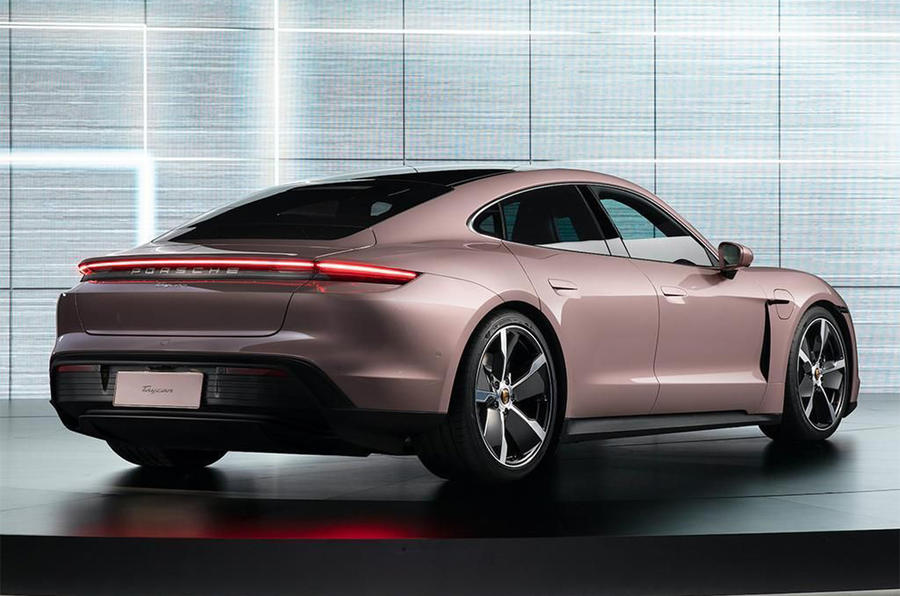All-new Taycan for the Chinese market is rear-driven with up to 350kW and a claimed 489km range.
Porsche has introduced a rear-driven entry-level model of its Taycan electric saloon, describing it as “a perfect entry point into the fully electrified Porsche world”.
Badged simply ‘Taycan’, the newcomer is the fourth available version of Stuttgart’s Tesla Model S rival so far, joining the 4S, Turbo and Turbo S. It’s destined exclusively for the Chinese market for the time being, but could come to Europe as Porsche caters to growing demand for electric models. A Porsche spokesperson said: “There is no confirmed timetable for its launch in other markets.”
It’s the first model in the line-up to send its power to the rear axle, rather than all four. A single Permanent Synchronous Motor at the rear produces 300kW when paired with the standard-specification 79.2kWh battery, but can be upgraded to 350kW with the 93.4kWh Performance Battery Plus.

Despite the 50kW gap, both versions are claimed to accelerate from 0-100km/h in 5.4 seconds with launch control and reach a top speed of 230km/h. That compares with the 4.0sec 0-100km/h time and 250km/h top speed of the 4S, currently the cheapest Taycan available in Australia.
The 79.2kWh unit offers a range of 414km on China’s NEDC cycle, while the larger pack takes that figure to 489km – the longest range Taycan yet. However, the NEDC figures are notoriously unrealistic, so it remains to be seen how the new model fares on Europe’s stricter WLTP procedure.
Porsche says the Taycan’s 265kW regenerative braking capacity means “the majority of braking operations in everyday use are performed by the electric motor alone, without the brakes needing to do anything.”

Aside from the badge, there’s little visual indication of the model’s entry-level positioning. Subtle differences include black brake callipers and a set of bespoke 19in ‘Taycan Aero’ wheels.
As standard, the Taycan sits on conventional steel-spring suspension, though the adaptive air suspension system from higher-spec cars is available as an option. Both are equipped with Porsche Active Suspension Management (PASM).
Prices for the new model start from 888,000 Chinese Yuan, which translates to around $183,000. That’s 20 per cent less than the price of the 4S in China, so we could expect the entry-level car to retail from around $150,000 if it comes to Australia.

Porsche CEO Oliver Blume said last year that variable battery configurations allow the sports car maker to introduce market-specific versions of electric models.
“In future, you will recognise Porsche all over the world – the same design, the same engineering and quality,” he said.
“But we will do special models for certain countries depending on legislation, or on the software side, we will create special solutions for the different needs of customers.”
He added: “We are able to build an entry-level car for China, for example. But [bespoke high-end] models are also possible. It depends on the market. [The US and China are two markets] where there will be a demand for more expensive or more powerful cars.”
Felix Page




